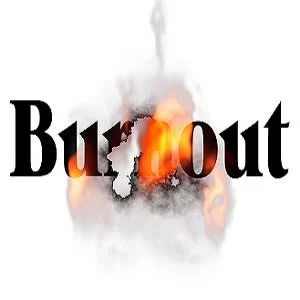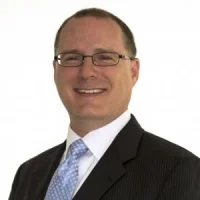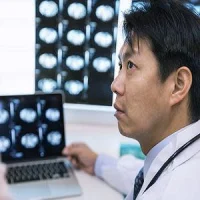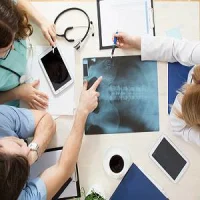Burnout is a global health problem affecting physicians across all medical specialities who work in variable hospital settings and work environments. Radiologists, in particular, experience high rates of burnout, and this trend has only continued to worsen, according to a special report published online in the journal Academic Radiology.
It is notable that burnout is also prevalent among U.S. physicians-in-training, including medical students, residents, and fellows. Such high levels of professional burnout among healthcare professionals have been shown to be detrimental to quality and safety in healthcare. Burnout can also lead to a loss in physician productivity, and may even lead to high physician turnover, early retirement contributing to worsening physician shortages, and increasing healthcare costs.
Research data show the prevalence of burnout in practising radiologists increased from 36% in 2013 to 49% in 2017, according to the special report published by the Association of University Radiologists — Radiology Research Alliance Task Force on “Promoting Health and Wellness for Radiologists”.
Numerous studies have reported that increasing workload is one of the leading sources of job related stress. Workloads in radiology have substantially increased in the last 20 years with the advent of PACS (Picture Archiving and Communications Systems), increased utilisation of advanced cross sectional imaging with much larger sets of data to analyse, voice recognition software and self-editing, and an overall increase in the number of imaging studies read. Studies also report that radiologists working a higher number of night shifts may be at a higher risk of burnout.
Interestingly, an unintended and unfortunate negative effect of PACS has been the substantial decrease in the face-to-face and telephone consultations between referring physicians and radiologists. This resultant increase in isolation of radiologists from other healthcare professionals may potentially contribute to a low sense of personal achievement and increased depersonalisation.
The Task Force also notes in its report that loss of professional autonomy can contribute to burnout. "Lack of control over daily clinical schedule, on call responsibilities, work pattern and vacation schedule may lead to decreased satisfaction with work-life balance, and thereby contribute to work-related stress."
With the incidence of burnout in healthcare professionals including radiologists increasing at record levels, the Task Force calls for urgent measures to address this global malady. Some possible solutions for radiologist burnout are listed below.
Physician-directed interventions
• Restore physical balance through appropriate physical activities; adequate sleep and proper nutrition are essential
• Taking care of one's emotional and social self is equally important. Frequent self-assessment, acknowledging feelings of gratitude, and healthy spiritual practices may help to achieve optimum emotional and spiritual well-being
• Relationship balance is vital since a physician's well-being will affect not just themselves but also their loved ones; ensuring that adequate time is spent with loved ones may help to counter work related stress and reduce work-life conflict
• Having appropriate time off from work can help to relax and de-stress, and the rejuvenated physician may find work more enthusiastic and stimulating
• Indulging in leisure and volunteering activities outside of the workplace that are personally meaningful may promote the overall well-being
Organisation-directed Interventions
• Open communication and transparency between an organisation and its staff is vital, and can include open forum meetings, face-to-face meetings, a suggestion box system, surveys, a 24/7 physician telephone hotline, and letters (physical or electronic)
• The organisation should routinely quantify physician well-being to monitor for progress and change; quantifiable factors that contribute to physician well-being include personal fulfilment, work engagement, stress, work-life balance, and quality of life
• Having adequate staffing is important as this can help to share the workload appropriately, afford greater job flexibility and allow greater work-life balance. During busy periods, having shorter shifts and/or overlapping coverage may also be helpful to alleviate the workload
• Reducing the isolation of the radiologist inside and outside of the reading room is another way to help prevent burnout. Fostering a culture of collegiality among radiologists and administrative staff in the work environment is a way to accomplish this.
• Having a hospital organisational committee dedicated to physician wellness is key to acknowledging and addressing physician burnout. To ensure success, these committees should have the unwavering support of the organisation's leadership
Various other strategies have also been proposed to help overcome physician burnout including cognitive behavioural therapies and improving physicians’ self-confidence and communication skills. Some authors have also reported that combining institutional group and individual interventions are more likely to be successful.
"Preventing burnout in radiologists is vital for ensuring high physician satisfaction, optimal healthcare delivery, and positive patient outcomes," the Task Force points out.
Source: Academic Radiology
Image Credit: Pixabay
References:
Chetlen AL et al. (2018) Addressing Burnout in Radiologists. Academic Radiology, Available online 31 July 2018. https://doi.org/10.1016/j.acra.2018.07.001
Latest Articles
Healthcare, Radiologists, burnout
Burnout is a global health problem affecting physicians across all medical specialities who work in variable hospital settings and work environments. Radiologists, in particular, experience high rates of burnout, and this trend has only continued to worse










